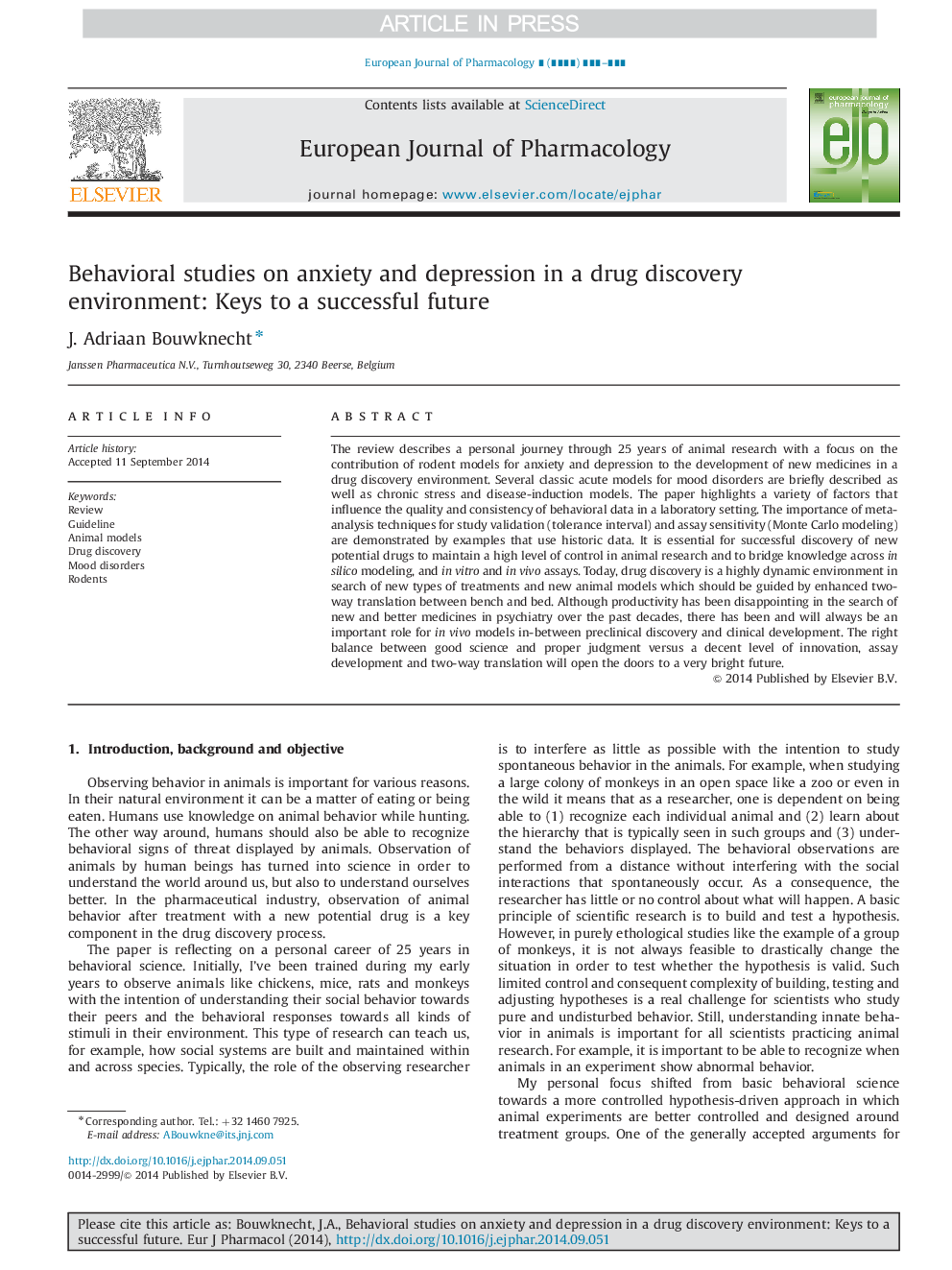| Article ID | Journal | Published Year | Pages | File Type |
|---|---|---|---|---|
| 5827476 | European Journal of Pharmacology | 2015 | 19 Pages |
Abstract
The review describes a personal journey through 25 years of animal research with a focus on the contribution of rodent models for anxiety and depression to the development of new medicines in a drug discovery environment. Several classic acute models for mood disorders are briefly described as well as chronic stress and disease-induction models. The paper highlights a variety of factors that influence the quality and consistency of behavioral data in a laboratory setting. The importance of meta-analysis techniques for study validation (tolerance interval) and assay sensitivity (Monte Carlo modeling) are demonstrated by examples that use historic data. It is essential for successful discovery of new potential drugs to maintain a high level of control in animal research and to bridge knowledge across in silico modeling, and in vitro and in vivo assays. Today, drug discovery is a highly dynamic environment in search of new types of treatments and new animal models which should be guided by enhanced two-way translation between bench and bed. Although productivity has been disappointing in the search of new and better medicines in psychiatry over the past decades, there has been and will always be an important role for in vivo models in-between preclinical discovery and clinical development. The right balance between good science and proper judgment versus a decent level of innovation, assay development and two-way translation will open the doors to a very bright future.
Related Topics
Life Sciences
Neuroscience
Cellular and Molecular Neuroscience
Authors
J. Adriaan Bouwknecht,
